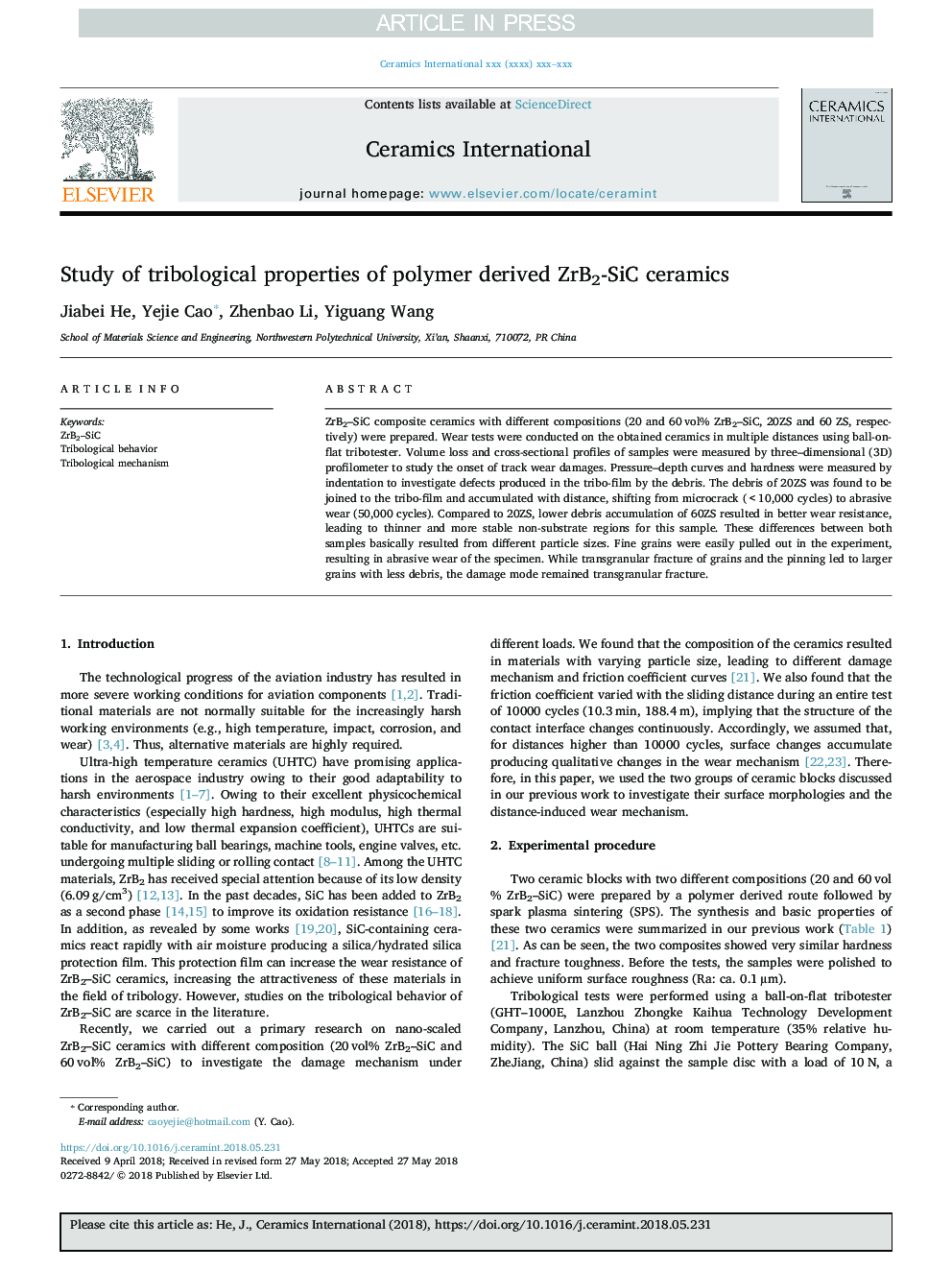| Article ID | Journal | Published Year | Pages | File Type |
|---|---|---|---|---|
| 7886488 | Ceramics International | 2018 | 4 Pages |
Abstract
ZrB2-SiC composite ceramics with different compositions (20 and 60â¯vol% ZrB2-SiC, 20ZS and 60 ZS, respectively) were prepared. Wear tests were conducted on the obtained ceramics in multiple distances using ball-on-flat tribotester. Volume loss and cross-sectional profiles of samples were measured by three-dimensional (3D) profilometer to study the onset of track wear damages. Pressure-depth curves and hardness were measured by indentation to investigate defects produced in the tribo-film by the debris. The debris of 20ZS was found to be joined to the tribo-film and accumulated with distance, shifting from microcrack (ï¼10,000 cycles) to abrasive wear (50,000 cycles). Compared to 20ZS, lower debris accumulation of 60ZS resulted in better wear resistance, leading to thinner and more stable non-substrate regions for this sample. These differences between both samples basically resulted from different particle sizes. Fine grains were easily pulled out in the experiment, resulting in abrasive wear of the specimen. While transgranular fracture of grains and the pinning led to larger grains with less debris, the damage mode remained transgranular fracture.
Related Topics
Physical Sciences and Engineering
Materials Science
Ceramics and Composites
Authors
Jiabei He, Yejie Cao, Zhenbao Li, Yiguang Wang,
